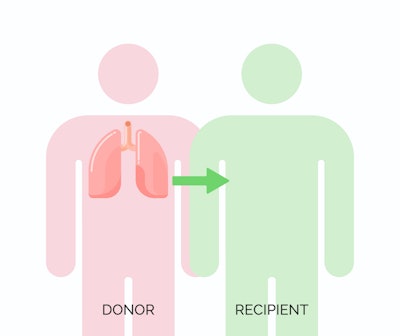
Recently published data demonstrated fewer patients have died or been delisted on the lung transplant waitlist since the United Network for Organ Sharing (UNOS) implemented new allocation guidelines two years ago. The abstract, “Improvement in Wait List Mortality for the Most Critically Ill Since the Implementation of the CAS,” was presented at the 2025 ATS International Conference and published in the American Journal of Respiratory and Critical Care Medicine.
Under the Composite Allocation Score (CAS), waitlisted patients have a lower risk of death or delisting than they did prior to the implementation of revised guidelines. Researchers also discovered that the sickest patients on the waitlist experienced the largest benefit.
“We always want to make sure that any time we make a change to the allocation system that we’re improving outcomes, especially for our sickest patients,” first author Mary Raddawi, MD, said in a press release. “This provides confirmation that we’re on the right track.
Previously, donor lungs were allocated based on geographical proximity, with local patients getting priority access. In 2017, following a lawsuit on this approach, the allocation radius expanded, and UNOS began to develop improved guidelines.
Dr. Raddawi, who is a second-year fellow at Columbia University Irving Medical Center in New York City, led the research team that analyzed 24,368 patients on the lung transplant waitlist and in the UNOS registry. In the retrospective cohort study, researchers compared outcomes of patients who fell into three timeline groups:
- Group 1: Listed between February 2015 and November 2017, when the allocation area expanded
- Group 2: Listed between November 2017 and March 2023, when the new CAS guidelines were implemented
- Group 3: Listed between March 2023 and March 2024
The scientists found the proportion of patients on the lung transplant waitlist who died or were delisted considerably decreased with each new timeline group. The percentages, respectively, were 11.2%, 8.4% and 4.1%.
Improvements were even more significant for patients with the top 5% of waitlist urgency scores. Before 2017, these individuals were three times more likely to die while on the waitlist than they were after the CAS implementation in March 2023.
According to the Organ Procurement and Transplantation Network (OPTN), an organization that works closely with UNOS, the CAS system considers nine factors. Majority of the points come from a candidate’s medical urgency, the probability of survival (at least five years) and age. Patients who are 18 years or younger at time of listing take precedence.
“When you think about the fact that now we’re focusing on many different factors, including medical urgency, it makes sense that the waitlist mortality would go down for our sicker patients — but it is nice to see the actual numbers,” Dr. Raddawi said. “We’re seeing that it really does make a difference for them.”
Researchers said they plan to follow up on the study by examining whether certain biological factors considered in CAS scores are associated with better outcomes among the critically ill patients.























